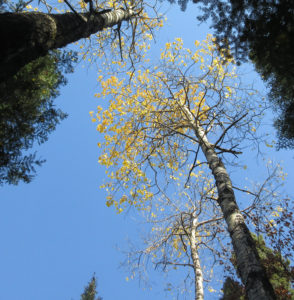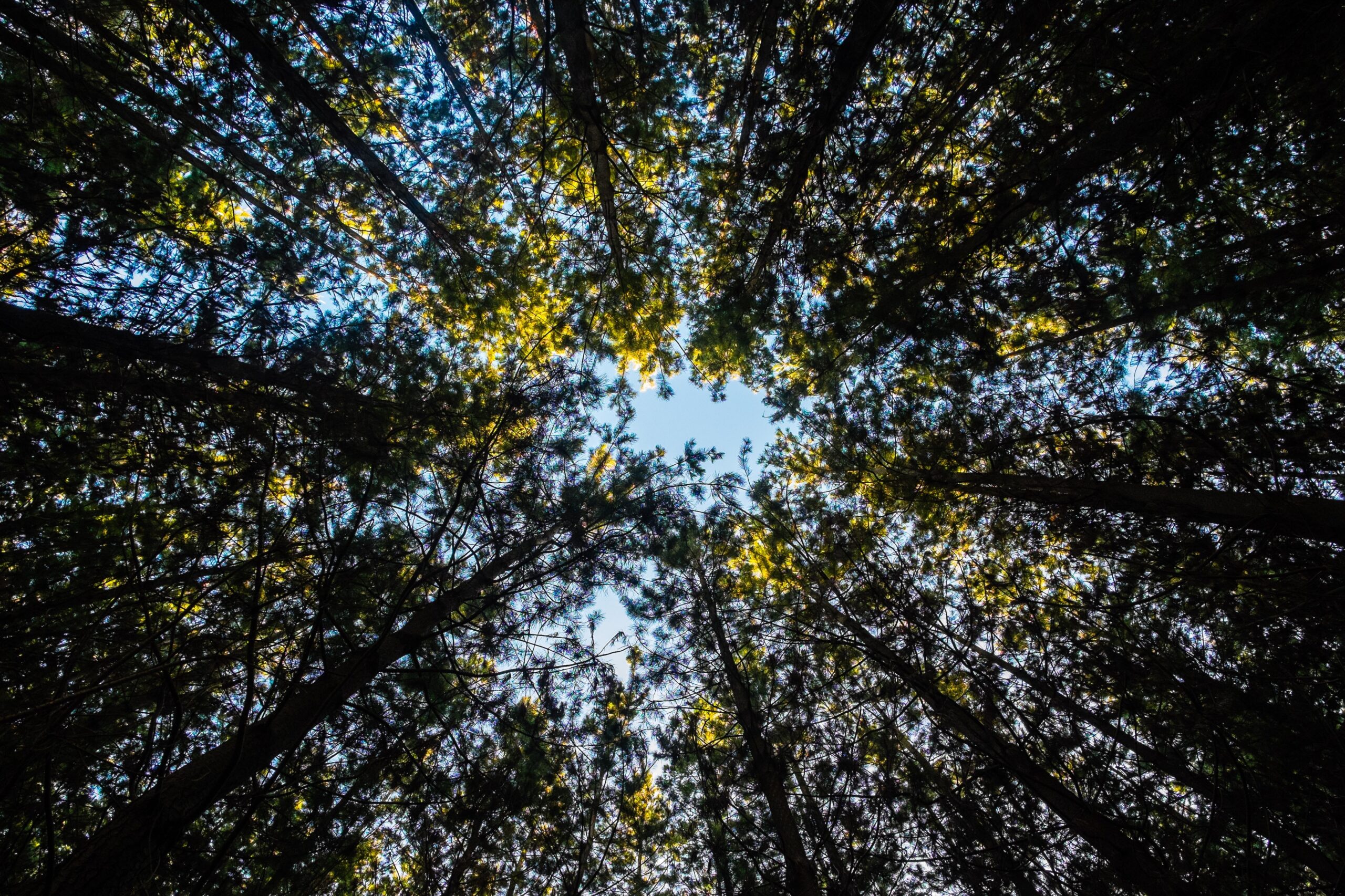By Wolf Ridge Naturalist
Windy, sunny, 45° F
It’s a windy day here at the mandala.

The largest aspen, just a few feet in front of me, is swaying in a pendular motion. Side to side, front to back, and round in circles. There are four aspens in this stand, altogether comprising a single, giant organism. New aspen trees don’t typically start from seed, although the trees will produce them. More often than not, the parent aspen will start a new tree through the propagation of its own roots.
These new trees are genetically identical to the parent, a young clone of mom or dad. Propagation gives the aspens an advantage in growth, so much so that the largest organism in the world is said to be a colony of quaking aspens in Utah, spanning 100 acres and thought to be over 80,000 years old.
Back at the mandala, I watch the leafy tops of the aspens shake about and visualize their interconnected roots firmly grasping one another below the surface. With the sun shining, it looks as though the leaves are playing in the breeze rather than bracing against it. Each yellow leaf does its own hysterical dance, like one of those giant tube-men outside of car dealerships.
I look to the fallen leaves on the ground before me for clues to the aspen’s propensity to dance. The aspen leaf fits neatly in my palm, its pointy margins contrasting with the rounded features of my hand. Though the margins of the leaf are pointy, they’re more like cresting waves than jagged peaks.
Eventually, my focus turns to the petiole, the point where the stem joins the leaf. On many other leaves, like the maples, the petiole is round, while on the aspen, it is flat. Could this be the answer to the mystery? Perhaps some analysis in physics, structural integrity, and aerodynamics would reveal the answer to why the aspen leaves flitter about so much. Interestingly, I often find the answers that science provides lacking in meaning.
When we meet someone who loves to dance, whose laugh is brilliantly contagious, who is thoughtful and caring, do we look for answers in their DNA? Do we trace their lineage, stick them in a lab, and tell them to dance? No, rather, we laugh and dance alongside them. Today, I smile and enjoy the aspens.
If the aspens love to dance, then where is their music? It is the wind itself, because what is music, or any sound, but vibrations in the air? In a class last spring, one of my adults shared that she sold air for a living; she worked in radio. Sound is a vibration that produces a wave of pressure in the air. The number of vibrations per second is called frequency and is measured in hertz. Humans have an audible range of about 20-20,000 hertz, with this range decreasing with age. Lower frequencies are sounds like a bass drum, rumbling thunder, and a deep voice, while higher frequencies are those of whistles, squeaks, and squeals.
If the aspens love to dance, then where is their music?
The wind is the movement of air caused by differences in pressure, which is the basis for sound. The aspen leaves at the tops of the trees are indeed, dancing to the music. But let’s not forget that the aspens are all the same organism, and that sound, or music, can be felt as well as heard. Sound travels in waves through the air, water, and other various substances, such as the ground. Sound cannot be seen, but its vibrations can be felt. Just as you can feel your heartbeat, perhaps the trees are dancing to the sounds of the ground as well, sounds that are outside of our detectable range.
The aspens hear my footsteps as I approach the mandala, they feel the chipmunk scurrying across the leaf litter, and hear each others’ roots stretch and bend with the music above. They are all listening to the same tune of the earth, holding hands at their roots, and dancing in the sky.
This series is inspired by David G. Haskell’s The Forest Unseen. Haskell visits a one-square meter patch of forest (the mandala) almost daily for one year to tell the story of the forest changing through the seasons. Haskell uses the term mandala, referencing the Buddhist geometric figure symbolizing the universe, to refer to the small forest patch he watches. I’ll be visiting the same spot in the forest a few times a week, periodically writing about the experience, and connecting the stories I see unfolding to larger themes of biology.

